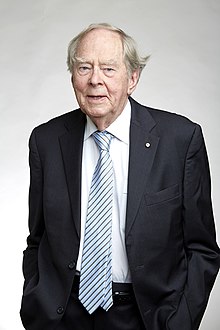
Donald Arthur Glaser was an American physicist, neurobiologist, and the winner of the 1960 Nobel Prize in Physics for his invention of the bubble chamber used in subatomic particle physics.

Copper extraction refers to the methods used to obtain copper from its ores. The conversion of copper ores consists of a series of physical, chemical and electrochemical processes. Methods have evolved and vary with country depending on the ore source, local environmental regulations, and other factors.

Froth flotation is a process for selectively separating hydrophobic materials from hydrophilic. This is used in mineral processing, paper recycling and waste-water treatment industries. Historically this was first used in the mining industry, where it was one of the great enabling technologies of the 20th century. It has been described as "the single most important operation used for the recovery and upgrading of sulfide ores". The development of froth flotation has improved the recovery of valuable minerals, such as copper- and lead-bearing minerals. Along with mechanized mining, it has allowed the economic recovery of valuable metals from much lower-grade ore than previously possible.

Mineral processing is the process of separating commercially valuable minerals from their ores in the field of extractive metallurgy. Depending on the processes used in each instance, it is often referred to as ore dressing or ore milling.

Martin Andrew Green is an Australian engineer and professor at the University of New South Wales who works on solar energy. He was awarded the 2021 Japan Prize for his achievements in the "Development of High-Efficiency Silicon Photovoltaic Devices". He is editor-in-chief of the academic journal Progress in Photovoltaics.

The Eureka Prizes are awarded annually by the Australian Museum, Sydney, to recognise individuals and organizations who have contributed to science and the understanding of science in Australia. They were founded in 1990 following a suggestion by science journalist Robyn Williams.
The Prime Minister's Prizes for Science are annual Australian awards for outstanding achievements in scientific research, innovation, and teaching. The prizes have been awarded since 2000, when they replaced the Australia Prize for science.
Foam fractionation is a chemical process in which hydrophobic molecules are preferentially separated from a liquid solution using rising columns of foam. It is commonly used, albeit on a small scale, for the removal of organic waste from aquariums; these units are known as "protein skimmers". However it has much broader application in the chemical process industry and can be used for the removal of surface active contaminants from waste water streams in addition to the enrichment of bio-products.
Gordon Wallace, AO, FAA, FTSE, FRACI is a leading scientist in the field of electromaterials. His students and collaborators have pioneered the use of nanotechnology in conjunction with organic conductors to create new materials for energy conversion and storage as well as medical bionics. He has developed new approaches to fabrication that allow material properties discovered in the nano world to be translated into micro structures and macro scopic devices.
Richard A. Williams, OBE, FREng, FTSE, FRSE is a British academic and engineer. He is the Principal and Vice-Chancellor of Heriot-Watt University. He took up this position on 1 September 2015. He is also a chemical engineer, Vice President, and a Trustee of the Royal Academy of Engineering.
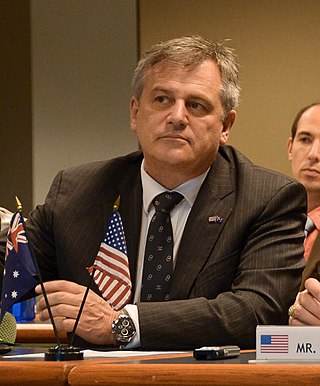
Alexander Zelinsky is an Australian computer scientist, systems engineer and roboticist. His career spans innovation, science and technology, research and development, commercial start-ups and education. Professor Zelinsky is Vice-chancellor and President of the University of Newcastle joining the university in November 2018. He was the Chief Defence Scientist of Australia from March 2012 until November 2018. As Chief Defence Scientist he led defence science and technology for Australia's Department of Defence.
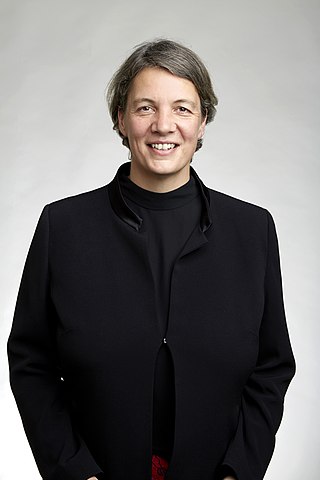
Michelle Yvonne Simmons is an Australian quantum physicist, recognised for her foundational contributions to the field of atomic electronics.

Tadimety Chakrapani Rao, also known as T.C. Rao, is an Indian mineral processing scientist and researcher.

The Jameson Cell is a high-intensity froth flotation cell that was invented by Laureate Professor Graeme Jameson of the University of Newcastle (Australia) and developed in conjunction with Mount Isa Mines Limited.
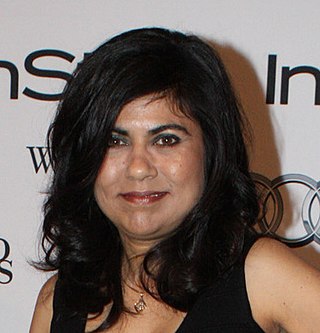
Veena Sahajwalla is an inventor and Professor of Materials Science in the Faculty of Science at UNSW Australia. She is the Director of the UNSW SM@RT Centre for Sustainable Materials Research and Technology and an Australian Research Council Laureate Fellow.
Mary Josephine O'Kane, AC an Australian scientist and engineer, is the Chair of the Independent Planning Commission of New South Wales. She is also a company director and Executive Chairman of O’Kane Associates, a Sydney-based consulting practice specialising in government reviews and research and innovation advice to governments in Europe, Asia and Australasia.
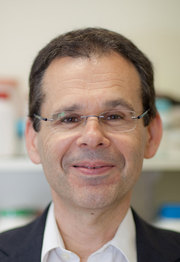
Anthony Steven Weiss is an Australian university researcher, company founder and entrepreneur. He is the leading scientist in human tropoelastin research and synthetic human elastin. He holds the McCaughey Chair in Biochemistry, heads the Charles Perkins Centre Node in Tissue Engineering and Regenerative Medicine, and is Professor of Biochemistry and Molecular Biotechnology at the University of Sydney. His discoveries are on human elastic materials that accelerate the healing and repair of arteries, skin and 3D human tissue components. He is a Fellow of the Royal Society of Chemistry. Weiss is on the editorial boards of the American Chemical Society Biomaterials Science and Engineering, Applied Materials Today (Elsevier), Biomaterials, Biomedical Materials, BioNanoScience (Springer) and Tissue Engineering. He is a biotechnology company founder, promoter of national and international technology development, and has received national and international awards, including the Order of Australia.
Jan Dean Miller is an American engineer, currently Distinguished Professor of metallurgical engineering and Ivor D. Thomas Endowed Chair at University of Utah.
Amit Agrawal is an Indian engineer and an institute chair professor at the Department of Mechanical Engineering of the Indian Institute of Technology, Bombay. He leads a group of scientists who are involved in the development of next-generation diagnostic microdevices.
Binoy Kumar Saikia is a Principal Scientist at North East Institute of Science and Technology, Jorhat (NEIST), Assam, India. He is also the Head of Coal & Energy Division of NEIST. His research interests span energy and environment in general and in particular chemistry and technology of coal, carbon and nano-materials, atmospheric aerosols, and air pollution. He has developed different chemical processes towards alternative applications of coal feedstocks leading to value addition and possibility for minimizing conventional coal combustion in the future. He has developed and patented, both in India and the US, a technology for the production of blue-fluorescent carbon quantum dots from Indian coal.
